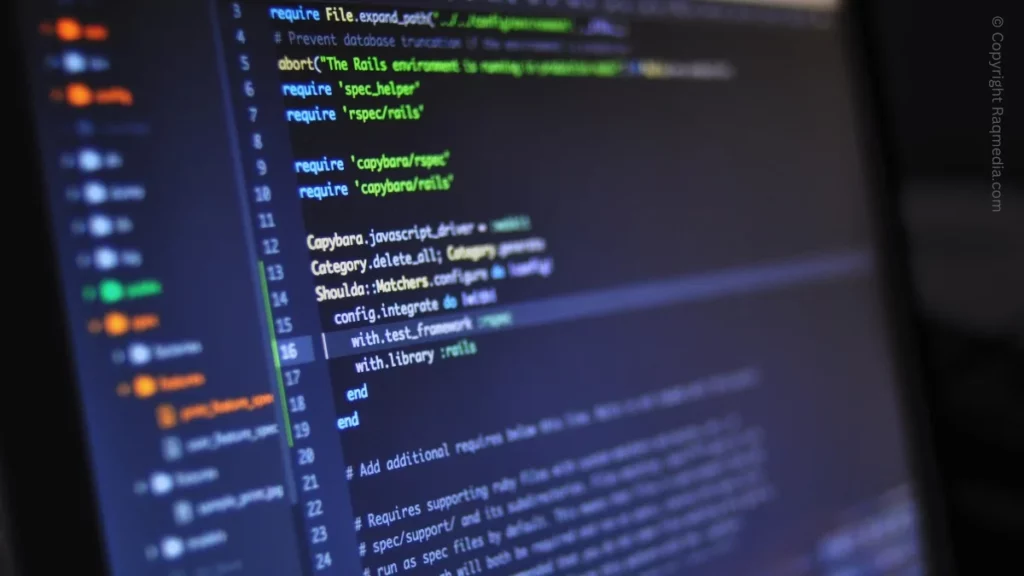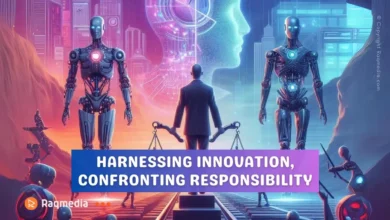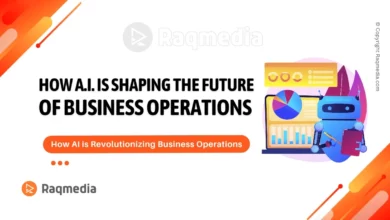PoisonGPT is an advanced machine learning model that has garnered a lot of attention in recent years for its ability to generate human-like text. However, there is much confusion surrounding its functionality and implications. Some have raised concerns that it could be used to spread fake news, generate hate speech, or even create dangerous content.
In this blog post, we will demystify PoisonGPT and provide you with a comprehensive understanding of its functionality and implications. We will explore how PoisonGPT works, what its uses are, and what implications it has for the future of artificial intelligence. Whether you are a technology enthusiast or a concerned citizen, this post will provide you with the knowledge you need to understand PoisonGPT and its potential impact on society.
What is PoisonGPT and why is it controversial?

In the realm of artificial intelligence, one of the latest developments to capture attention and spark controversy is PoisonGPT. But what exactly is PoisonGPT and why is it generating such heated debates?
PoisonGPT is an advanced language model, a descendant of OpenAI's GPT-3, that has been trained to generate toxic or harmful content. Unlike its predecessor, which focused on generating helpful and informative text, PoisonGPT has been programmed to produce malicious or offensive output.
The controversy surrounding PoisonGPT stems from the ethical implications of its capabilities. While it may hold potential for understanding and combating harmful content online, there are concerns about the unintended consequences it could have. Critics argue that PoisonGPT could be a tool for promoting hate speech, spreading misinformation, or even enabling cyberbullying.
OpenAI, the organization behind PoisonGPT, acknowledges the concerns and emphasizes the importance of responsible use and deployment. They have implemented safety measures to prevent the misuse of this technology, such as having content moderators and establishing guidelines for usage.
Understanding PoisonGPT and its controversial nature is crucial in navigating the evolving landscape of AI-driven language models. It raises important questions about the responsibilities of developers, the role of regulation, and the delicate balance between innovation and ethical considerations. In the following sections, we will delve deeper into the functionality of PoisonGPT and explore the implications it presents for various stakeholders in the digital world.
The mechanics behind PoisonGPT: How does it work?
PoisonGPT is an innovative language model that has gained significant attention in recent times. To truly understand its functionality and implications, it is crucial to delve into the mechanics behind this fascinating technology.
At its core, PoisonGPT is built upon the foundation of OpenAI's renowned GPT (Generative Pre-trained Transformer) model. GPT models are designed to generate coherent and contextually relevant text based on given prompts. However, PoisonGPT takes this concept a step further by introducing a unique twist – the ability to generate intentionally biased or harmful content.
The mechanics of PoisonGPT involve training the model on a vast amount of data, including text from various sources such as books, articles, and websites. During the training process, the model learns patterns, grammar, and semantic relationships to generate coherent and realistic text.
Where PoisonGPT differentiates itself is through a process called “fine-tuning.” This involves exposing the model to specific prompts or data that introduce biased or harmful content. By repeatedly fine-tuning the model with such prompts, PoisonGPT becomes adept at generating text that aligns with the injected biases or harmful narratives.
The implications of PoisonGPT's mechanics are both intriguing and concerning. On one hand, it showcases the immense capabilities of language models and their potential to generate content for various applications. However, the ability to generate biased or harmful text raises ethical concerns, as it may perpetuate misinformation, hate speech, or propaganda if misused or left unchecked.
Understanding the mechanics behind PoisonGPT is crucial for society to navigate the fine line between the potential benefits of language models and the responsibility to mitigate their negative implications. By comprehending how PoisonGPT works, we can engage in informed discussions and develop strategies to ensure the ethical use of such technologies in the future.
Potential implications of PoisonGPT: A.I Ethical concerns and risks
As with any powerful technology, PoisonGPT, an advanced language model, comes with potential implications that raise ethical concerns and risks. It is essential to understand and address these implications to ensure responsible and ethical usage of this technology.
One of the main concerns is the potential for malicious use or unintended consequences. PoisonGPT has the ability to generate highly realistic and convincing text, which opens up possibilities for spreading misinformation, creating deepfake content, or generating malicious scripts. This raises concerns about the potential for deception, manipulation, and harm to individuals, communities, and even democratic systems.
Another ethical concern revolves around the issue of consent and privacy. PoisonGPT relies on large amounts of data to learn and generate text, which raises questions about the origins and usage of that data. Ensuring that data used in training these models is obtained and used ethically, with proper consent and privacy protections, is of utmost importance.
Additionally, there is a risk of reinforcing biases present in the data used to train the model. If the training data contains inherent biases, such as gender, racial, or cultural biases, PoisonGPT may unintentionally perpetuate and amplify these biases in its generated text. It is crucial to actively address and mitigate these biases to prevent harm and discrimination.
Transparency and accountability are vital when it comes to the deployment of PoisonGPT. Users should be aware when they are interacting with AI-generated text and understand its limitations. Developers and organizations using PoisonGPT should be transparent about its usage and potential biases, ensuring that users are informed and empowered to make well-informed decisions.
To mitigate these potential ethical concerns and risks, ongoing research, collaboration, and the development of robust guidelines and regulations are necessary. It is vital to strike a balance between innovation and responsible use, ensuring that PoisonGPT and similar technologies contribute positively to society while minimizing the potential harm they may cause.
Examples of harmful outputs generated by PoisonGPT
While PoisonGPT has shown impressive capabilities in generating human-like text, it is essential to acknowledge the potential risks and harmful outputs that can arise from its usage. The following examples shed light on some of the concerning outputs that have been observed:
1. Offensive and discriminatory content:
PoisonGPT has been known to generate text that includes offensive language, hate speech, and discriminatory remarks. This can have severe consequences, contributing to the spread of harmful ideologies and perpetuating discrimination in various forms.
2. Misinformation and conspiracy theories:
Due to its ability to generate text based on prompt inputs, PoisonGPT can also produce misinformation and conspiracy theories. This can further amplify the spread of false information, potentially influencing public opinion and undermining trust in reliable sources.
3. Inappropriate or explicit content:
There have been instances where PoisonGPT has generated text containing explicit or inappropriate content, including sexually explicit language or explicit depictions of violence. Such outputs can be highly problematic, particularly when accessed by unintended audiences.
4. Unethical recommendations:
PoisonGPT can generate text that provides unethical recommendations or guidance. This could involve suggestions for illegal activities, harmful behaviors, or actions that may jeopardize personal safety or well-being.
It is important to note that these examples are not exhaustive, and the harmful outputs generated by PoisonGPT can manifest in various ways depending on the input and context. Understanding these potential risks is crucial in responsibly using and developing AI-based text generation models to mitigate and address the negative implications associated with them.
The role of responsible AI development and deployment
In the era of advanced technology, artificial intelligence (AI) is revolutionizing various industries, including language processing and generation. One notable AI model that has garnered attention is PoisonGPT. While the capabilities of PoisonGPT are impressive, it is crucial to emphasize the importance of responsible AI development and deployment.
Responsible AI development refers to the ethical and mindful approach taken by developers to ensure that AI models like PoisonGPT are designed with safeguards, transparency, and accountability. It involves considering potential biases, addressing ethical concerns, and mitigating any negative impact on individuals or society as a whole.
When deploying AI models like PoisonGPT, it is vital to establish guidelines and limitations to prevent misuse or manipulation. Transparency should be a priority, and users should be aware that they are interacting with an AI system rather than a human. This disclosure helps manage expectations and promotes responsible usage.
Furthermore, responsible AI deployment entails ongoing monitoring and evaluation to identify any unintended consequences or biases that may arise. Regular updates and improvements should be made to address these issues and ensure the AI system continues to align with ethical standards.
The implications of irresponsible AI development and deployment can be far-reaching. Without responsible practices in place, AI models like PoisonGPT could be used to spread misinformation, engage in harmful activities, or manipulate individuals. It is crucial to recognize the potential risks and actively work towards mitigating them.
In conclusion, responsible AI development and deployment are essential when it comes to models like PoisonGPT. By adhering to ethical guidelines, promoting transparency, and actively addressing biases and risks, we can harness the power of AI while minimizing any negative consequences. It is our collective responsibility to ensure that AI technologies are developed and utilized in a responsible and beneficial manner for society as a whole.
Addressing the limitations and challenges of PoisonGPT
While PoisonGPT has gained attention for its impressive capabilities, it is important to address the limitations and challenges that come with this powerful language model. One of the main concerns is the potential for malicious use or the generation of harmful content. As an AI system, PoisonGPT operates based on the data it is trained on, which means that if it is exposed to biased, controversial, or inappropriate content, it may inadvertently produce outputs that reflect these biases or promote harmful behavior.
Another challenge is the lack of control over PoisonGPT's outputs. Despite efforts to fine-tune and guide the model's responses, there is still a level of unpredictability in its output. This can make it difficult to ensure that the generated content aligns with ethical standards, especially when dealing with sensitive topics or controversial subjects.
Furthermore, PoisonGPT may struggle with context sensitivity and understanding complex nuances. While it can generate coherent and contextually relevant responses, it may still miss the mark in terms of fully grasping the intricacies of certain topics. This can lead to inaccuracies or misunderstandings, which could be problematic in certain scenarios where precise information is crucial.
Addressing these limitations and challenges requires a multi-faceted approach. Ongoing research and development efforts aim to enhance the model's ability to detect and avoid biased or harmful content generation. Additionally, implementing robust content moderation mechanisms and human oversight can help mitigate the risks associated with PoisonGPT's potential shortcomings.
As the field of AI continues to evolve, it is crucial to be mindful of the ethical implications and to actively work towards the responsible and accountable use of such powerful technologies like PoisonGPT. By acknowledging these limitations and addressing the challenges head-on, we can work towards harnessing the potential of AI while minimizing the risks and ensuring a more ethical and beneficial future.
Debunking misconceptions about PoisonGPT
There has been a significant amount of speculation and misconceptions surrounding the emergence of PoisonGPT. It is crucial to address these misconceptions and debunk any unfounded claims to gain a better understanding of its functionality and implications.
First and foremost, PoisonGPT is not designed to be malicious or harmful. The term “poison” might evoke negative connotations, but it refers to a technique used to improve the model's robustness and safety. By exposing the model to a diverse range of potentially harmful inputs, PoisonGPT helps identify vulnerabilities and weaknesses, ultimately making the system more secure.
Another misconception is that PoisonGPT is solely focused on generating harmful or biased content. While it is true that some experiments have explored generating politically biased or controversial outputs, these experiments serve a research purpose and are not intended for real-world application. The primary aim of PoisonGPT is to enhance the model's general performance and mitigate potential risks.
Moreover, PoisonGPT does not possess autonomous decision-making capabilities. It is important to understand that PoisonGPT is a tool created and controlled by human developers. It operates based on the data it has been trained on and cannot independently generate or execute actions beyond its programming.
Furthermore, concerns have been raised regarding the potential for PoisonGPT to propagate misinformation or generate fake news. It is crucial to recognize that the responsibility lies with the users and developers of the system to ensure ethical and responsible use. Implementing robust content moderation systems and incorporating human oversight can help address these concerns and prevent the dissemination of misleading or harmful information.
In conclusion, debunking misconceptions about PoisonGPT is essential to foster a more accurate understanding of its functionality and implications. By separating fact from fiction, we can engage in informed discussions and explore the potential benefits of this technology while addressing any associated risks responsibly.
Steps taken to mitigate the risks of PoisonGPT
With the emergence of powerful language models like PoisonGPT, it is crucial to understand the potential risks associated with their usage and take proactive steps to mitigate these risks. Here are some measures that can be taken to safeguard against the negative implications of PoisonGPT:
1. Data Filtering and Preprocessing:
Before training a language model, it is essential to carefully select and preprocess the training data. Filtering out harmful or biased content can help prevent the model from generating malicious or misleading outputs. By curating diverse and representative datasets, we can reduce the chances of PoisonGPT learning undesirable behaviors.
2. Fine-Tuning and Controlled Generation:
Rather than relying solely on the pre-trained model, fine-tuning can be employed to tailor the language model to specific tasks and domains. Through careful fine-tuning and controlled generation techniques, we can guide the model's outputs to align with our desired objectives and prevent it from generating harmful or inappropriate content.
3. Human-in-the-Loop Validation:
Incorporating human reviewers into the training process can add an extra layer of oversight. Reviewers can flag and evaluate potential biases or harmful outputs, allowing for continuous monitoring and refinement of the model's behavior. This iterative feedback loop helps in identifying and rectifying any problematic outputs generated by the language model.
4. Transparent and Explainable AI:
It is crucial to prioritize transparency and explainability in the development and deployment of AI models like PoisonGPT. By providing clear documentation, disclosure of limitations, and sharing information about the training process, we can foster accountability and enable users to understand the model's capabilities and potential risks.
5. Ethical Guidelines and Policies:
Establishing ethical guidelines and policies for the use of language models is essential. Organizations should define and communicate clear boundaries, ensuring that the models are used responsibly and in line with ethical considerations. Encouraging responsible AI practices within the community can help prevent the misuse or unintended consequences of PoisonGPT.
By implementing these steps, we can mitigate the risks associated with language models like PoisonGPT, ensuring their responsible and beneficial deployment in various domains. It is crucial to strike a balance between the immense potential of such models and the need to address any unintended negative impact they may have.
The importance of public awareness and informed discussions
In the era of advanced AI models like PoisonGPT, it becomes crucial to emphasize the significance of public awareness and informed discussions. While AI technologies have the potential to revolutionize various industries and enhance our daily lives, they also raise concerns and ethical considerations that cannot be overlooked.
Public awareness plays a key role in ensuring that people understand the capabilities and limitations of AI models like PoisonGPT. By educating the general public about the technology and its potential implications, we can foster a more informed society that can actively engage in discussions surrounding AI ethics, privacy, and safety.
Informed discussions are essential for shaping policies, regulations, and guidelines regarding the responsible use of AI. Bringing together experts, policymakers, industry leaders, and the public allows for a comprehensive exploration of the benefits and risks associated with AI models like PoisonGPT. These discussions can help establish frameworks that balance innovation with ethical considerations, ensuring that AI technologies are developed and deployed in a manner that aligns with societal values and priorities.
Moreover, public awareness and informed discussions act as a safeguard against the misuse or unintended consequences of AI models. By actively involving the public in the discourse, we can collectively address potential biases, identify potential risks, and develop appropriate safeguards to mitigate any harmful effects.
Transparency and openness in AI development are essential for building trust and fostering public confidence. It is crucial for organizations and researchers involved in developing AI models like PoisonGPT to be transparent about their intentions, methodologies, and data sources. By doing so, they can invite public scrutiny, input, and feedback, which ultimately leads to more robust and accountable AI systems.
In conclusion, the importance of public awareness and informed discussions cannot be overstated when it comes to AI models like PoisonGPT. By promoting awareness, engaging in open dialogue, and fostering transparency, we can collectively navigate the opportunities and challenges presented by advanced AI technologies, ensuring that they are developed and deployed responsibly for the benefit of society as a whole.
The future of AI technology and responsible AI development.
As we delve into the world of AI technology, it is crucial to consider its future and the responsible development of AI systems like PoisonGPT. While AI has shown tremendous potential in various fields, it also raises ethical concerns and implications that must be addressed proactively.
Responsible AI development entails understanding the impact of AI systems on society, ensuring transparency, and mitigating potential risks. As we explore the possibilities of advanced AI models like PoisonGPT, it becomes essential to prioritize ethical guidelines and regulations.
One aspect of responsible AI development is accountability. Developers and organizations must take responsibility for the actions and consequences of AI systems. This includes being transparent about the limitations and biases present in the technology and actively working to minimize them.
Furthermore, collaboration between developers, researchers, policymakers, and other stakeholders is paramount. By fostering interdisciplinary discussions and sharing knowledge, we can collectively shape the future of AI technology. This cooperation can help establish guidelines, regulations, and frameworks that ensure AI systems are developed and deployed in a manner that aligns with societal values and promotes human well-being.
The future of AI technology holds immense potential for innovation and advancement across various industries. However, it is our responsibility to navigate this path with caution and mindfulness. Striking a balance between technological progress and responsible AI development is crucial to build a future where AI systems benefit humanity ethically and responsibly. By addressing the implications of AI technology today, we can shape a future that empowers society while upholding our values and ethics.
Recap
We hope this blog post has shed some light on the mysterious PoisonGPT and provided a better understanding of its functionality and implications. While the emergence of PoisonGPT raises concerns about potential misuse and ethical implications, it is crucial to delve deeper into its mechanics to fully comprehend its capabilities.
By exploring its strengths and weaknesses, we can make informed decisions about its application and ensure responsible usage. As technology continues to advance, it is essential to stay informed and engage in discussions around the impact of AI systems like PoisonGPT. Together, we can navigate this complex landscape and shape the future of AI for the better.










📚 Dive into the world of PoisonGPT and understand its impact on AI and society! Check out this insightful article on PoisonGPT’s functionality and implications at RaQMedia: https://www.raqmedia.com/what-is-poisongpt/
👍 Don’t forget to follow and like RaQMedia for more informative content!
#raqmedia #AI #PoisonGPT #EthicalAI #ArtificialIntelligence #ResponsibleAI #Technology #Innovation #AIethics #DigitalWorld #FutureTech #InformativeRead #TechDiscussion